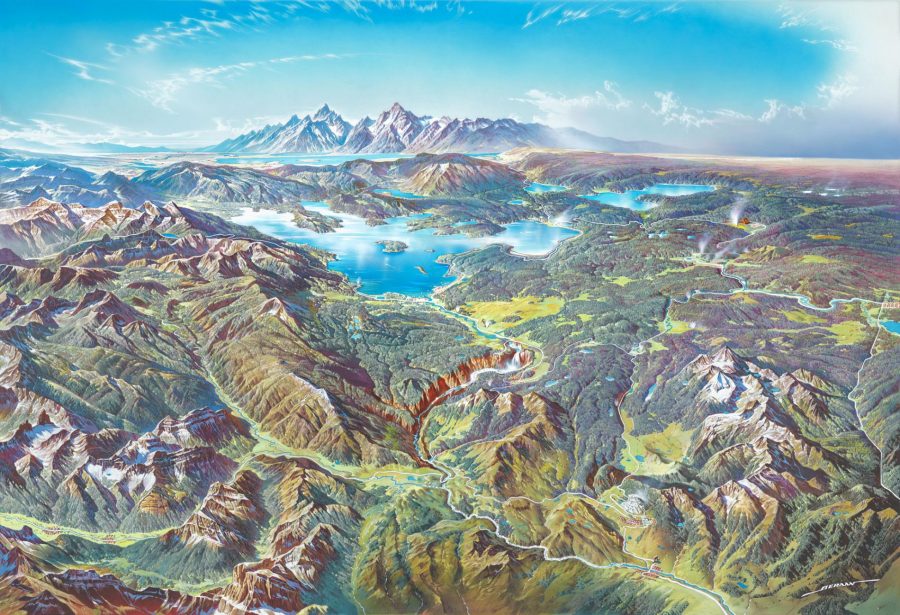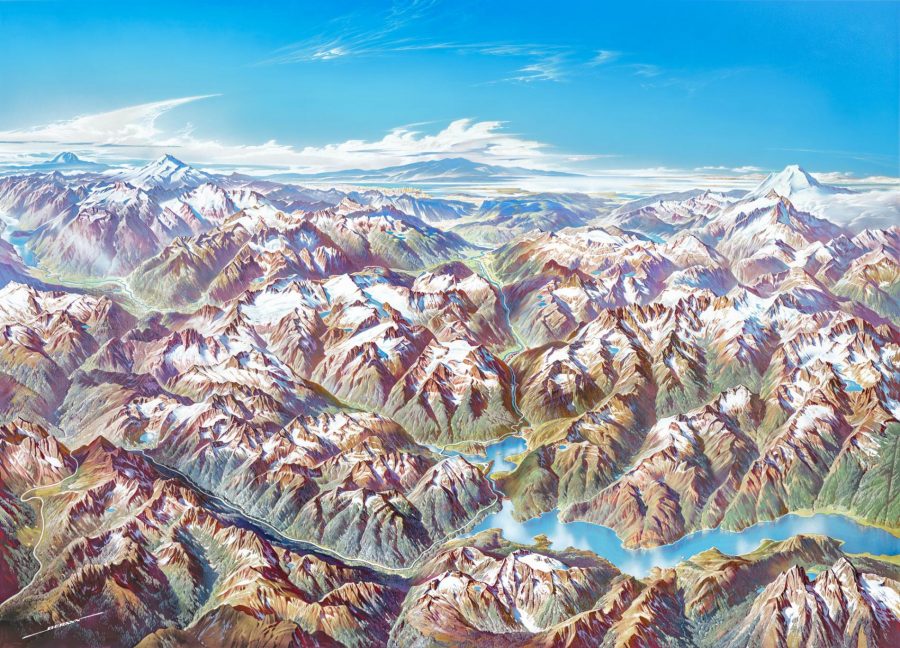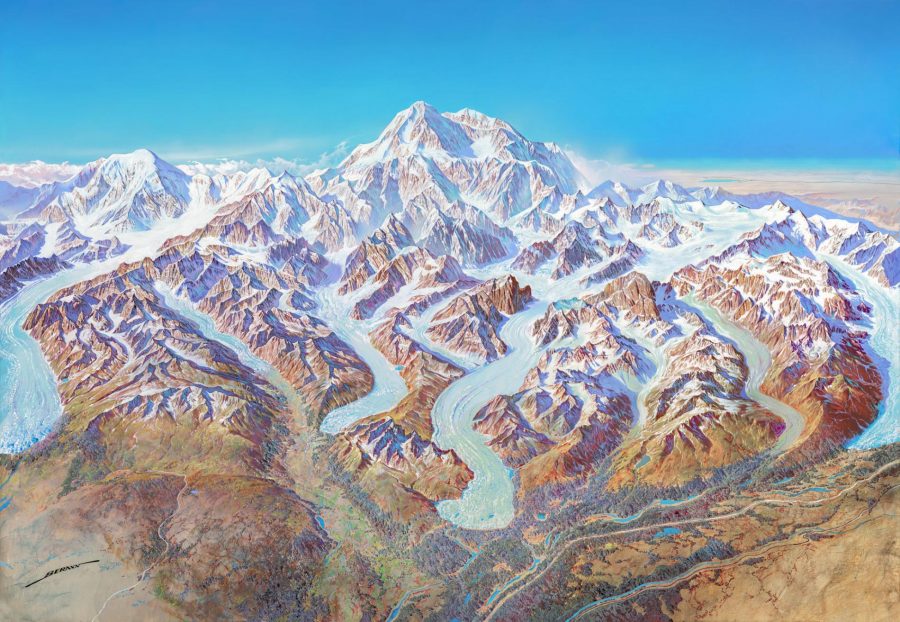[Most Recent Entries] [Calendar View]
Monday, July 8th, 2019
| Time | Event |
| 8:00a | Remembering the “Father of Bossa Nova” João Gilberto (RIP) with Four Classic Live Performances: “The Girl From Ipanema,” “Corcovado” & More If you first heard the work of great Brazilian guitarist and singer João Gilberto in a little tune called “The Girl From Ipanema,” you’re in the company of millions, whose introduction to Gilberto and the sounds of bossa nova jazz came from that song, recorded with saxophonist Stan Getz. When the L.A. Times’ Randall Roberts compares their collaborative album Getz/Gilberto to the arrival of the Beatles in the U.S., this may sound like an exaggeration. But bossa nova, like rock and roll, was already hugely popular, and sound of this record was a quiet revolution. Gilberto, who died this past Saturday at age 88, was “one of the most influential musicians of the 20th century.” He and “his peer and collaborator Antonio Carlos Jobim helped create and popularize bossa nova, a toned-down and romanticized take on Brazilian samba music.” Jobim may have written “The Girl From Ipanema,” but Gilberto first turned Americans on to its charms, and to what Allmusic’s John Dougan calls “the signature pop music of Brazil.” Called O Mito, “the legend,” in his home country, Gilberto’s influence is incalculable and has “resonated in the work of artists including Caetano Veloso, Sade, Gal Costa, Leonard Cohen, Joni Mitchell, Stereolab, Seu Jorge and pretty much every Brazilian songwriter since 1960,” writes Roberts. His countryman Veloso has said, “I owe João Gilberto everything I am today. Even if I were something else and not a musician, I would say that I owe him everything.” Many people have said similar things over the years about John Lennon or George Harrison, but an unassuming acoustic crooner singing in Portuguese? Could he really have that kind of cultural sway worldwide? It may be hard to see it now, but “bossa nova integrated itself into the global conversation in much the same way rock ‘n’ roll did.” Yet instead of rebelling, it dressed up; rather than “upping the tempo, attitude and energy,” it “soothed and seduced.” Bossa nova provided a counterpoint to the raw energy of American and British rock, but not in the comforting, nostalgic way of soft, soporific music like that of Lawrence Welk. Rather—partly through its influence on jazz musicians like Getz, Dizzy Gillespie, and Charlie Byrd—bossa nova became its own kind of hip popular idiom, cool instead of hot, but still sexy and new. Elvis even tried to cash in on the music’s growing popularity in 1963 with his “rollicking ‘Bossa Nova Baby’” from the movie Fun in Acapulco. The shoes didn’t quite fit. Bossa nova was subdued and subtle, a sound created for small spaces and small moves. It’s said that Gilberto’s quiet style of playing “developed in 1955 when he sequestered himself inside of a bathroom at his sister’s house so as not to disturb her family,” writes Felix Contreras at NPR, “and to take advantage of the acoustics provided by the bathroom tiles.” This intimate origin story aside, his was also a style that demarcated class lines in pop music. Popular among a slightly older set of listeners, in Brazil bossa nova first attracted “a new moneyed class eager to move away from the more traditional samba sound of explosive drums and group singing.” In its influence on American jazz, bossa nova also telegraphed luxury, with its deeply relaxed atmosphere and lush, unhurried textures. It is the sound of seaside resort hotels and upscale nightclubs, of yacht parties, art galleries, and penthouse apartments. “The Girl from Ipanema” sounds like the singing sixties worlds of James Bond and Hugh Hefner, not Haight Ashbury. Nonetheless, the song is an absolute classic for good reason, with Gilberto’s then-wife Astrud “on a sultry vocal” in English, repeating his understated Portuguese, and a “now-iconic tenor sax solo” by Getz. “It was a worldwide hit and won the 1965 Grammy for record of the year. Getz/Gilberto won album of the year and would go on to become one of the highest-selling jazz albums of all time.” For a time, bossa nova was everywhere, then it gave way to the harder-edged Tropicalia movement of younger musicians like Veloso and Gilberto Gil, and its vocabulary became absorbed into so many different kinds of music that we are hardly aware of its presence anymore. If “The Girl from Ipanema” was the first, and maybe, the last, you heard of João Gilberto, you owe it to yourself to learn more of his work. And, if you’re already a lifelong fan, you’ll appreciate all the more these live performances from Gilberto’s career. At the top, see him perform “The Girl From Ipanema” with the song’s composer and his old collaborator Jobim; further up, Gilberto plays “Desafinado” and “Carinhoso” live in concert,” and, just above, see him play “Corcovado.” Gilberto was cut out of his biggest global hit for the 1964 TV performance above. Producers opted to make Astrud the face and voice of “The Girl from Ipanema.” But the millions who bought the record heard his mesmerizing vocal and guitar work, and then kept hearing their influence on records released for decades afterward around the world. Related Content: The Strange History of Smooth Jazz: The Music We All Know and Love … to Hate The Existential Adventures of Iconoclastic Brazilian Musician Tim Maia: A Short Animated Film Josh Jones is a writer and musician based in Durham, NC. Follow him at @jdmagness Remembering the “Father of Bossa Nova” João Gilberto (RIP) with Four Classic Live Performances: “The Girl From Ipanema,” “Corcovado” & More is a post from: Open Culture. Follow us on Facebook, Twitter, and Google Plus, or get our Daily Email. And don't miss our big collections of Free Online Courses, Free Online Movies, Free eBooks, Free Audio Books, Free Foreign Language Lessons, and MOOCs. |
| 11:00a | Download Beautiful Panoramic Paintings of U.S. National Parks by H.C. Berann: Maps That Look Even More Vivid Than the Real Thing
The United States of America's national parks have been inspiring artists even before they were officially declared national parks. That goes not just for American artists such as the master landscape photographer Ansel Adams, but foreign artists as well. Take the Austrian painter Heinrich C. Berann, described by his official web site as "the father of the modern panorama map," a distinctive form that allowed him to hybridize "old European painting tradition with modern cartography."
Berann found his way to cartography after winning a competition to paint a map of Austria's Grossglockner High Alpine Road, which opened in 1934, a couple years after Berann's graduation from art school. "In the following years," says the artist's bio, "he improved this technique, created the modern panorama map and became famous all over the world for his maps that are in a class of their own." Maps in a class of their own need geographical subjects in a class of their own, and America's national parks fit that bill neatly. Berann's panoramas of Denali, North Cascades, Yellowstone, and Yosemite "were created in the 1980s and 90s as part of a poster program to promote the national parks," writes National Geographic's Betsy Mason. Just a few years ago, U.S. National Park Service senior cartographer Tom Patterson got to work on scanning the artworks in high resolution. When the project was complete, "the National Park Service released the new images on their newly redesigned online map portal, which also has more than a thousand maps that are freely available for the public to download."
Berann's 1994 painting of Denali National Park just above was his final work before retirement. It came at the end of a long and varied career in art that saw him paint not just the Alps, the Himalayas, the Virgin Islands, and the floor of the Pacific Ocean (as well as other impressive parts of the world under commission from the National Geographic society and six different Olympic Games) but travel posters and drawings of everything from landscapes to portraits to nudes.
But it is Berann's panoramic paintings of America's national parks, which you can download in high resolution here, that have done the most to make people see their subjects in a new way. Not least because, with an artistic sleight-of-hand that combines as many landmarks as possible into single vistas rendered with a strikingly wide range of colors, Berann provides them a series of vantage points entirely unavailable in real life. In one sense, these are all real national parks, but they're national parks captured in a way even Ansel Adams never could have done. via Boing Boing Related Content: Browse & Download 1,198 Free High Resolution Maps of U.S. National Parks Download 100,000 Photos of 20 Great U.S. National Parks, Courtesy of the U.S. National Park Service Download Iconic National Park Fonts: They’re Now Digitized & Free to Use Yosemite National Park in All of Its Time-Lapse Splendor Artist Re-Envisions National Parks in the Style of Tolkien’s Middle Earth Maps Based in Seoul, Colin Marshall writes and broadcasts on cities, language, and culture. His projects include the book The Stateless City: a Walk through 21st-Century Los Angeles and the video series The City in Cinema. Follow him on Twitter at @colinmarshall, on Facebook, or on Instagram. Download Beautiful Panoramic Paintings of U.S. National Parks by H.C. Berann: Maps That Look Even More Vivid Than the Real Thing is a post from: Open Culture. Follow us on Facebook, Twitter, and Google Plus, or get our Daily Email. And don't miss our big collections of Free Online Courses, Free Online Movies, Free eBooks, Free Audio Books, Free Foreign Language Lessons, and MOOCs. |
| 2:00p | Deconstructing Stevie Wonder’s Ode to Jazz and His Hero Duke Ellington: A Great Breakdown of “Sir Duke”
I too, find music theory confounding, but unlike musical polymath Collier, I don’t have much of an ear to fall back on. Which is possibly why I learned so much from his appearance on Vox's Earworm, above. He lent me his ears. Ten minutes in, I think I maybe, sort-of understand what chromaticism is. Rather than pull examples from a number of sources, Collier concentrates on his “musical crush” Stevie Wonder's chart topping 1976 tribute to jazz legend Duke Ellington, "Sir Duke." As Collier told Time Out Israel’s Jennifer Greenberg:
Collier has the innate know-how to break down those grooves, from the big band feel of the opening drums to the Motown sound backbeat of the verse. Aided by series producer Estelle Caswell and some graphics that visualize such fundamentally aural concepts as harmony and the pentatonic scale, Collier articulates in purely musical terms what makes this enduring hit so catchy. Certainly, the exuberant shout chorus doesn’t hurt. Collier has delved into Wonder’s catalogue before, leaping on the opportunity to harmonize with himself. That’s him above, at age 17, performing an a cappella "Isn’t She Lovely," his melodica standing in for Wonder's iconic harmonica solo. And Wonder’s "Don’t You Worry ‘Bout A Thing," below, presented his greatest challenge as an arranger, due to such quirks as “unexpected suspension chords” and the diatonic descending melody. Hold on to your hats at the 2:26 mark when the screen splits into over a dozen sections, in an attempt to contain all the talent on display. Related Content: See Stevie Wonder Play “Superstition” and Banter with Grover on Sesame Street in 1973 Ayun Halliday is an author, illustrator, theater maker and Chief Primatologist of the East Village Inkyzine. Her husband was gratified to see Jacob Collier shares his affinity for Crocs. No shame. Follow her @AyunHalliday. Deconstructing Stevie Wonder’s Ode to Jazz and His Hero Duke Ellington: A Great Breakdown of “Sir Duke” is a post from: Open Culture. Follow us on Facebook, Twitter, and Google Plus, or get our Daily Email. And don't miss our big collections of Free Online Courses, Free Online Movies, Free eBooks, Free Audio Books, Free Foreign Language Lessons, and MOOCs. |
| << Previous Day |
2019/07/08 [Calendar] |
Next Day >> |











